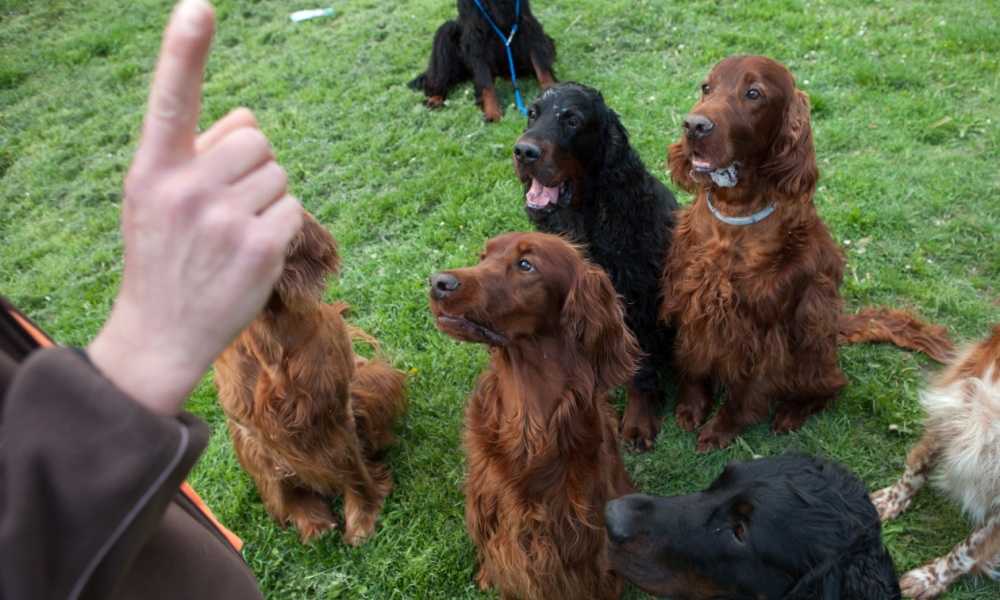How to Teach a Dog to Stay?
Imagine a world in which your exuberant puppy obeys the stay command every time. It could happen, but the road isn’t an easy one.
Teaching your dog to stay is one of the most important and useful commands, but it’s also one of the hardest lessons to teach since it requires a lot of patience from both you and your dog.
Nonetheless, you can seek assistance from a dog trainer, learn techniques with the help of online videos like Brain Training for Dogs, or try out the steps on how to teach a dog to stay that we have outlined below.
The Basic “Stay” Command
In case you might have been wondering how to teach a dog to stay on command, the easy steps below would be a good starting point.

Step 1: Start from Down
First, start from the down position. This is assuming you’ve already taught your dog this basic command. Although it’s not necessary to start from this position, it makes the next step a little easier because your dog is focused on you.
Step 2: Teach a New Command
Next, it’s time to teach the dog the new command. In a firm voice, say “Stay.” It is best to put your hand out with your palm forward and in a “stop” position, as this gives your dog both visual and audio cues of what you want them to do.
After you give them the new command, and they’ve followed, don’t reward them right away; wait for a few seconds.
Step 3: Release and Reward
The only way to get a dog to stay consistently and enthusiastically is if it knows that it’s temporary. You also have to teach the dog a command to release the stay. It can be something as simple as “OK” or “come.”
Upon release, praise the dog effusively. It can be followed with a treat, but that’s optional since this depends on the dog and the training philosophy.
Step 4: Repeat the New Command
Repeat the stay command by holding out your hand with your palm facing outwards, and firmly saying “Stay.” If the dog holds the position, you can release them after a while and reward with lots of praise (and treats).
However, don’t reward your dog if they don’t hold the position since they may be confused with the message you are trying to teach them. It’s best to repeat the stay command and make them wait for the release.
Step 5: Practice
Lastly, practice this command often. At first, try to keep the sessions relatively short, but once you feel your dog has mastered it, you may want to increase the time in the “stay” position gradually.
After they have mastered the new command for a length of time, you may also want to work on distance. That is by creating a distance gradually by issuing the stay command one step away from your dog.
Once your dog understands timing and distance, it may be time to incorporate distraction into your training. Practice in different environments like in the backyard, different parts of your house, at someone else’s house, or when taking a walk outside.

Six Extra Tips for Teaching a New Command
Tip 1: Incorporate the Three Ds
The aspects of the three Ds, which are duration, distance, and distractions, are frequently used by dog trainers. Every dog is different, though, so don’t overwhelm your dog by trying to do them all at once. You may want to see how they take the basic command first before slowly incorporating other advanced elements into their training.
Tip 2: Switching Starting Positions
Although the steps outlined above suggested that you start with the “down” position, you can try other start positions. One alternative is to start from a “sit” position. This may give you more flexibility when you teach the new command.
Tip 3: Don’t Shout at or Punish Your Dog
It’s counterproductive to punish your dog for breaking the “stay” or any other commands. You may be tempted to shout in frustration, but control your reaction since your raised voice will only alarm your pet. It is enough when they don’t receive a reward for breaking the command, or you may also consider using other force-free methods such as the ones suggested by Brain Training for Dogs.
Tip 4: Choose the Right Time to Practice
Have you ever tried to get a small child to sit still when they are excited? It’s the same for your dog so choose your practice time wisely, and don’t set them up to fail.
To do so, before you start, make sure your canine is relaxed and already well-exercised. Through this, you may find that the dog is more willing to participate in training.
Tip 5: Practice More
Whether you are correcting bad behavior or teaching a new command, you may have to practice them with your dog often. Why? According to experts, you’re creating new pathways in your dog’s brain; hence, the more you practice, the more they will accept it as normal.
Tip 6: Finish on a High Note
The end of your practice session makes the most profound impression so try to end it on a positive note, and that may mean watching your dog carefully.
Is the dog getting bored? Maybe it’s just not a good time or day for your dog to train? It’s better to reward your dog with the last maintained “stay” and cut the session short. At least, that way, the exercise still ends on a high note.
FINAL VERDICT
It can be pretty exciting to have your dog learn a new trick, but it may be coupled with a bit of stress for you and your dog. That is why it’s important to work together in this new endeavor.
When it comes to the best way on how to teach a dog to stay, you must choose a time when both you and your dog are relaxed and ready for training. You should also watch for cues that your dog is getting stressed or bored.
Additionally, if your dog is done with the lesson, try to finish on a high note and end the session quickly. It doesn’t do you or your dog any good if you try to push a session that he can’t focus on.
Similarly, take it slow when introducing new variables since dogs can easily get confused when you make changes quickly. Finally, remember to celebrate your dog’s new achievements with plenty of pats and praises.
If you have any further questions about training, you can consult a reputable dog trainer like Brain Training for Dogs. It can guide you towards the best possible solution for you and your dog. manisa escort bayan

